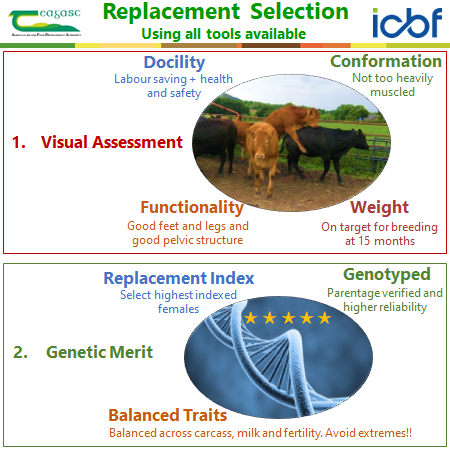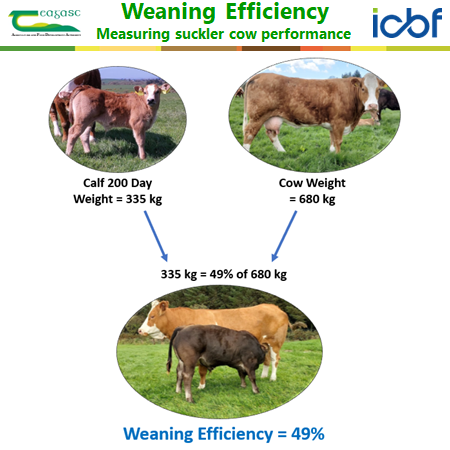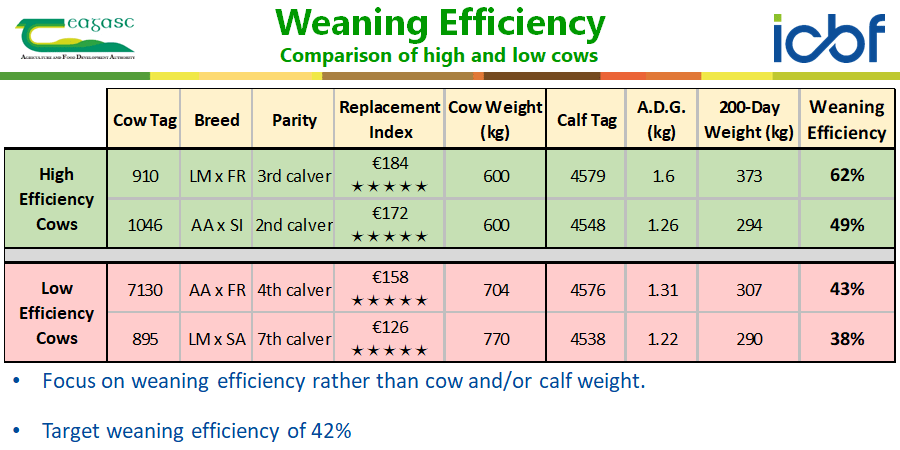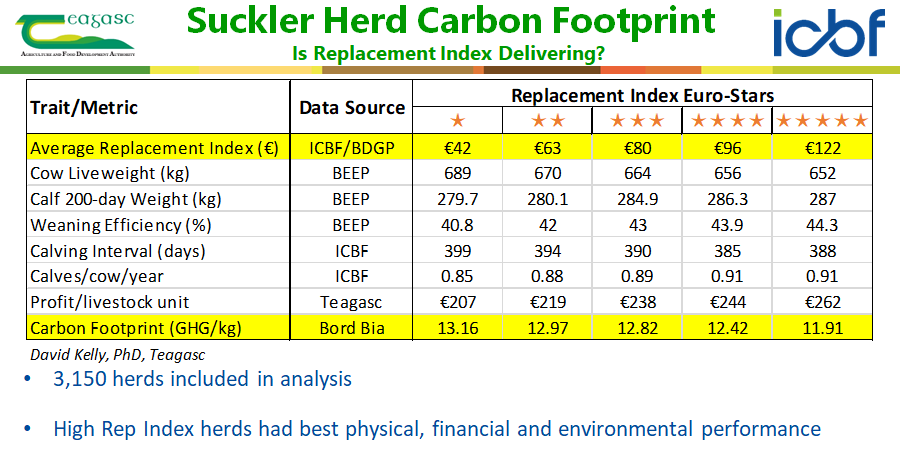ICBF were well represented at the recent Teagasc event #BEEF2022 which was held on Tuesday 5th July at the Grange Research farm in Co Meath. The livestock demo was covered by a combination of Teagasc, ICBF and two commercial suckler farmers, namely Sam Pierce from Co Wexford and Wesley Browne from Co. Monaghan.
The audience were initially presented with a sample of four young heifers selected from within the Derrypatrick herd in Grange. A discussion was held between the three speakers as to the process involved in the selection of heifers deemed suitable for breeding. Sam and Wesley outlined how, on their farms, they adopt a two-step approach to this critically important task. Initially, they use a visual assessment to make a shortlist from their batch of heifers based on traits like docility and weight for age. Once they have their shortlist identified, they then turn to the indexes to assist them in their final selection. This especially applies to identifying the hard to capture traits such as milk and fertility.
There was one heifer on display which generated a lot of healthy discussion in that she passed the visual selection but the indexes highlighted a potential issue with her fertility. Identifying this heifer before breeding her is where the indexes can have a very immediate and beneficial effect at farm level.
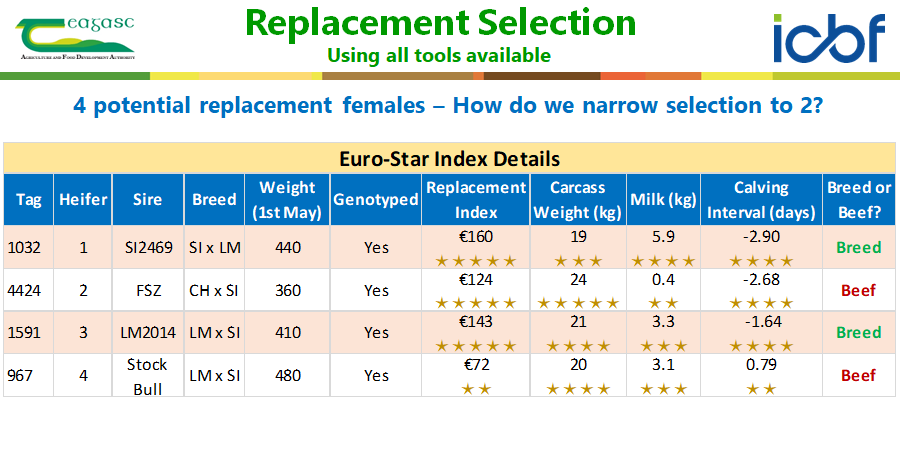 The second batch of animals on display were four suckler cows and their 2022 born calves. The purpose of this group was to discuss the new Weaning Efficiency metric which is being captured on approximately 25,000 suckler herds via the BEEP-S scheme. Weaning Efficiency is a calculation which expresses the calf’s adjusted 200-day weight as a % of the cow’s adjusted 200-days post-calving weight.
The second batch of animals on display were four suckler cows and their 2022 born calves. The purpose of this group was to discuss the new Weaning Efficiency metric which is being captured on approximately 25,000 suckler herds via the BEEP-S scheme. Weaning Efficiency is a calculation which expresses the calf’s adjusted 200-day weight as a % of the cow’s adjusted 200-days post-calving weight.
In an attempt to zone in on the cows own performance, the four calves on display were all sired by the same AI Charolais bull. The audience were presented with a wide range in performance within the herd. The best performing pair were operating at 62% weaning efficiency versus the lowest pair at only 38% efficiency. Converting these figures into financial reality saw a difference in the two calf’s weights of 83 kgs at 200 days. At the current market price of approximately €3 per kg this results in a significant difference of €249.The message to the audience was to use the Weaning Efficiency figure as an additional tool when deciding which cows to breed replacements from and also which cows may need to be culled from the herd.
ICBF was present on a board which presented analysis carried out by David Kelly, Teagasc Moorepark. David looked at data from over 3,000 herds to see if there was a link between the Euro-Star Replacement Index and the physical, financial and environmental performance of these herds. The 5-star herds had the best fertility and weight performance, the highest profit per livestock unit and the lowest emissions per kg of liveweight (see table below).
ICBF also had several staff on hand to answer questions which were primarily concerned with the BDGP and BEEP-S schemes throughout the course of what was a very well organised and attended event.
For anyone who missed the event, you can download the booklet here.

